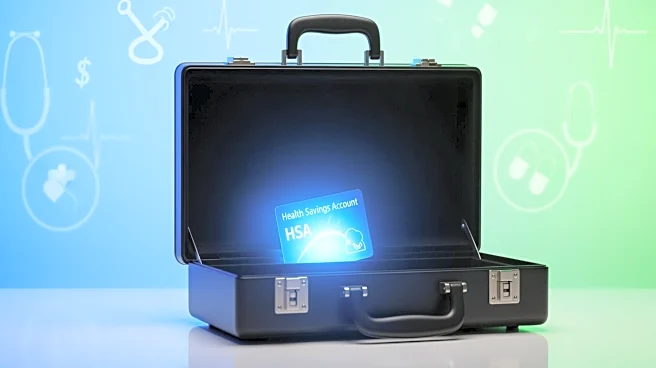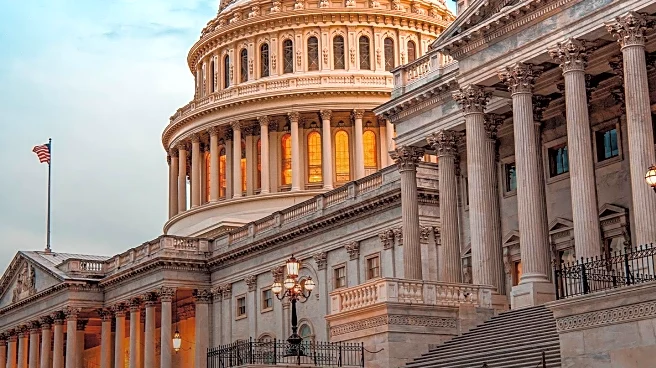What's Happening?
Self-employed individuals, including small-business owners and freelancers, can now open Health Savings Accounts (HSAs) to manage healthcare costs and reduce tax liabilities. HSAs offer tax advantages
for paying qualified medical expenses, and can be set up independently without employer sponsorship. To qualify, individuals must have a high-deductible health plan (HDHP) and meet specific IRS requirements. Starting January 1, 2026, eligibility for HSAs will expand under new legislation, allowing more self-employed individuals to benefit from tax advantages without switching to traditional HDHPs. Contribution limits for 2025 are set at $4,300 for individual plans and $8,550 for family plans, with additional catch-up contributions allowed for those aged 55 and older.
Why It's Important?
The ability for self-employed individuals to open HSAs represents a significant opportunity to manage healthcare expenses more effectively while benefiting from tax savings. HSAs provide flexibility in funding medical costs, allowing individuals to invest and grow their savings over time. This development is particularly beneficial for those without employer-sponsored health coverage, offering a viable option to reduce out-of-pocket expenses. The expansion of eligibility rules in 2026 will further enhance access to HSAs, potentially increasing financial security for self-employed individuals and contributing to broader economic stability.
What's Next?
As the eligibility rules for HSAs expand, self-employed individuals should prepare to take advantage of these changes by reviewing their health insurance plans and understanding the requirements for opening an HSA. Financial advisors and healthcare professionals may offer guidance on maximizing the benefits of HSAs, including investment strategies and tax planning. The upcoming changes may also prompt increased interest in HSAs among self-employed individuals, leading to greater adoption and utilization of these accounts in managing healthcare costs.











